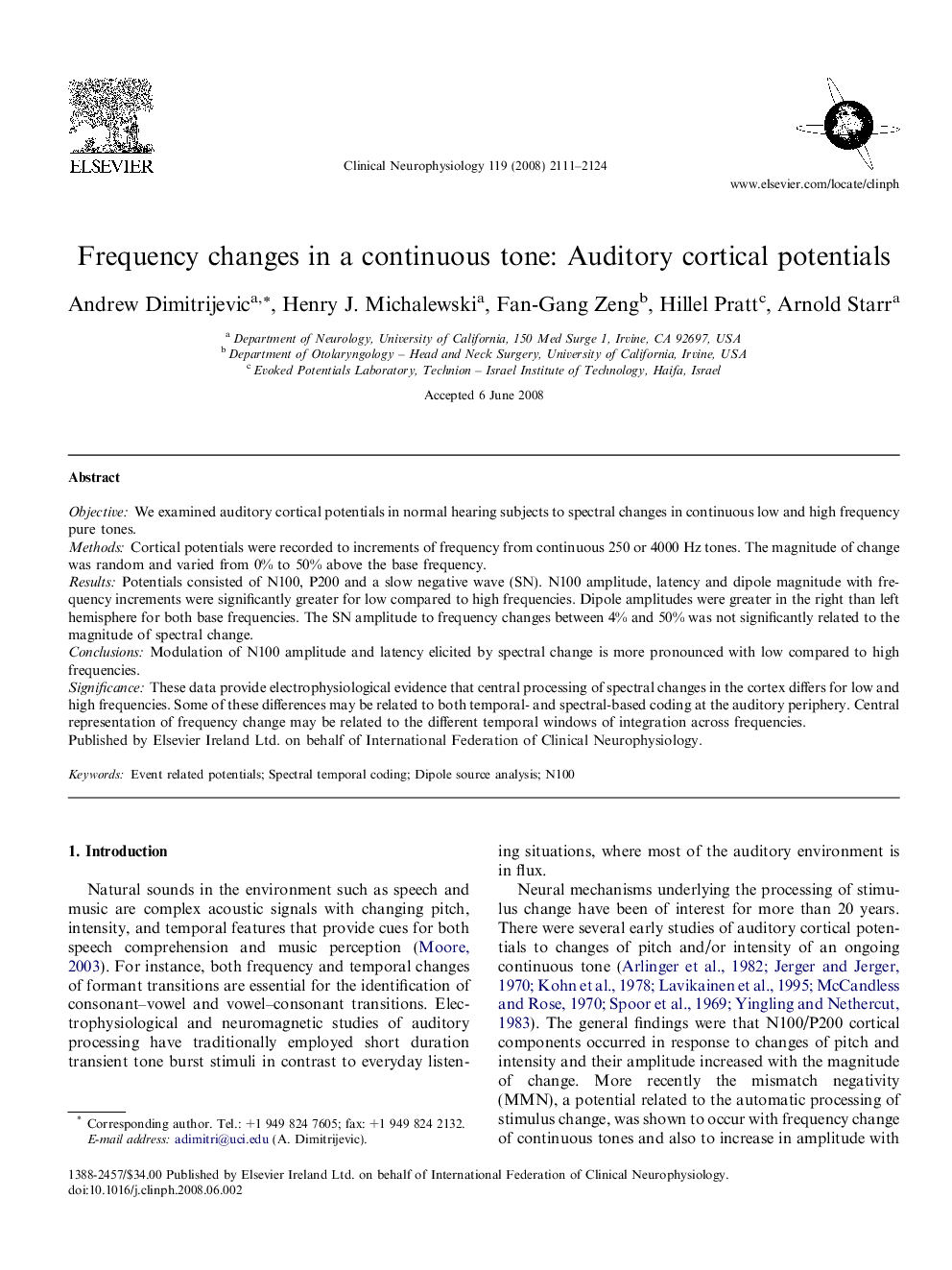| Article ID | Journal | Published Year | Pages | File Type |
|---|---|---|---|---|
| 3046919 | Clinical Neurophysiology | 2008 | 14 Pages |
ObjectiveWe examined auditory cortical potentials in normal hearing subjects to spectral changes in continuous low and high frequency pure tones.MethodsCortical potentials were recorded to increments of frequency from continuous 250 or 4000 Hz tones. The magnitude of change was random and varied from 0% to 50% above the base frequency.ResultsPotentials consisted of N100, P200 and a slow negative wave (SN). N100 amplitude, latency and dipole magnitude with frequency increments were significantly greater for low compared to high frequencies. Dipole amplitudes were greater in the right than left hemisphere for both base frequencies. The SN amplitude to frequency changes between 4% and 50% was not significantly related to the magnitude of spectral change.ConclusionsModulation of N100 amplitude and latency elicited by spectral change is more pronounced with low compared to high frequencies.SignificanceThese data provide electrophysiological evidence that central processing of spectral changes in the cortex differs for low and high frequencies. Some of these differences may be related to both temporal- and spectral-based coding at the auditory periphery. Central representation of frequency change may be related to the different temporal windows of integration across frequencies.
